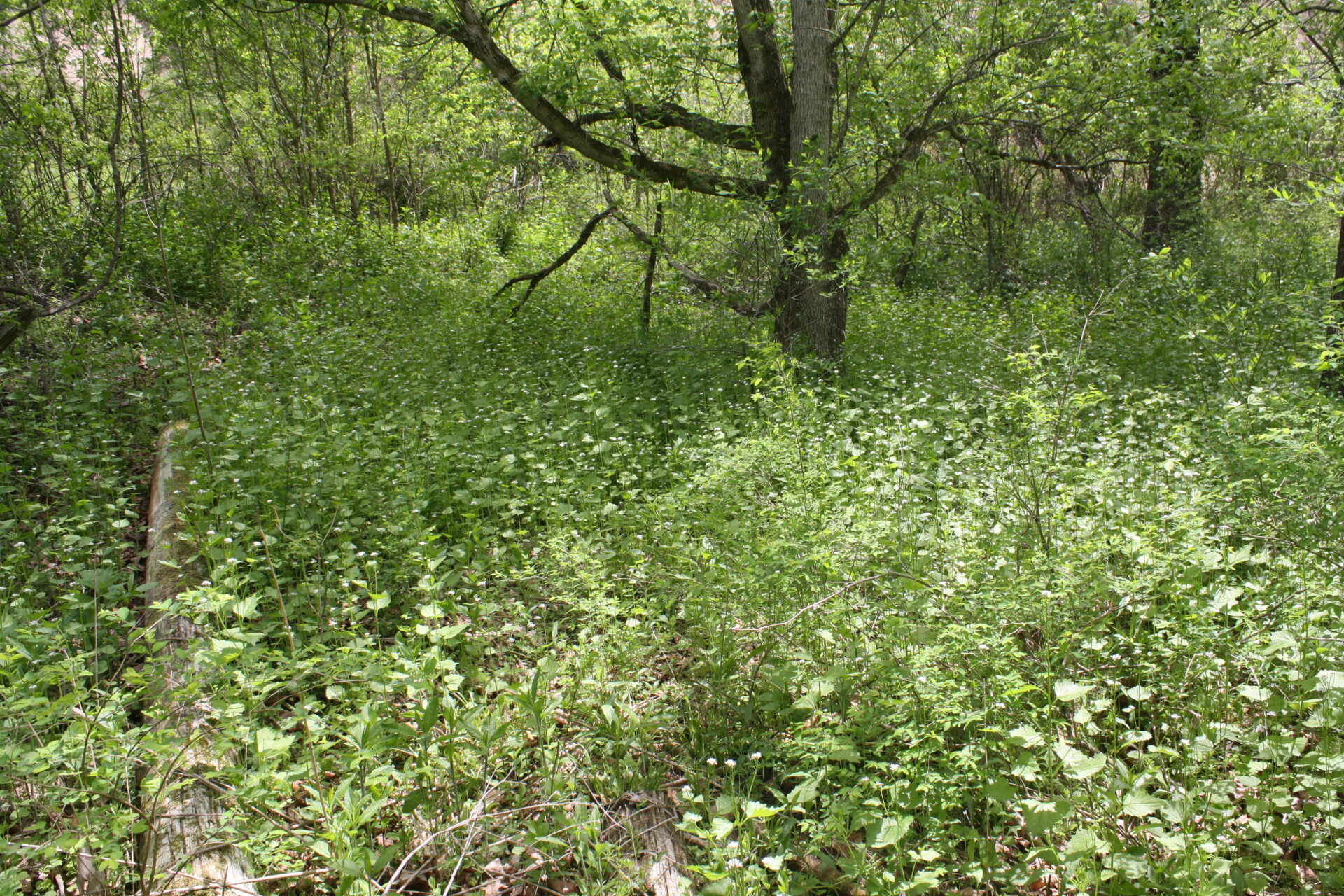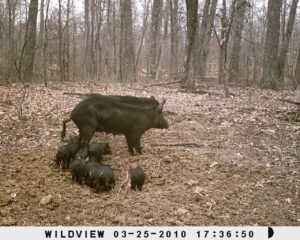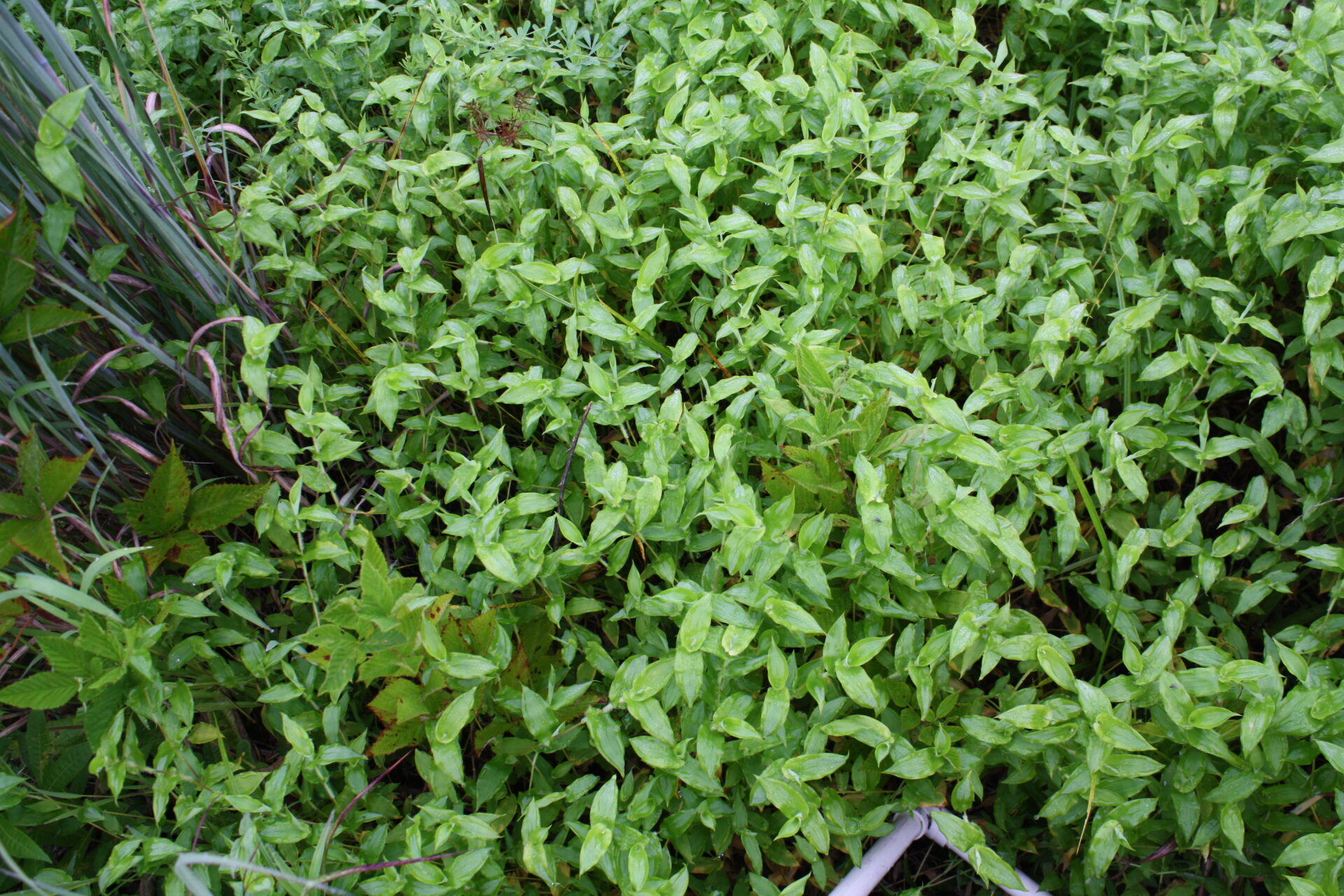By Kelly Vowels
Two of the largest threats to Bernheim forests are climate change and non-native invasive species. While the long-term impacts of climate change will most likely be severe, the degree and type of change is hard to discern and largely beyond our control. We can, however, slow or stop the spread of invasive species by allocating time, resources, and policy changes to our stewardship practices.

What is an invasive species? An invasive species is an exotic species that can cause environmental and economic harm to an area. Non-native species and invasive species are not the same thing. Numerous non-native species are found among our fruits and vegetables, as well as within Bernheim’s plant collections. However, these species do not spread beyond where they are planted. Invasive species on the other hand have the capability and tendency to spread far distances from where they were introduced and reproduce rapidly. They will outcompete the native species in the area and can alter the ecosystem. These species can be plants, as well as any type of animal, fungus, bacteria, or living organism. Invasive species can also inflict harm by spreading diseases and negatively impacting other species within an ecosystem. In fact, over 40% of threatened and endangered species are in decline due to the introduction of an invasive species.

So what is Bernheim Forest doing to combat invasive species within our borders? Bernheim in the past decades has had an invasive species removal program. Staff and volunteers spend endless hours removing invasive plant species from our prairies and forests. These invasive species include garlic mustard (Allaria officinalis), burning bush (Euonymus alatus), bush honeysuckle (Lonicera maackii), winter creeper (Euonymus fortunei), Japanese stilt grass (Microstegium vimineum), and so many others. Bernheim has been working to remove over one hundred invasive plant species in the last 30 years and has cleared hundreds of acres of invasive species. Bernheim staff have also been successful in eradicating feral pigs from our borders. Bernheim is in a special position as an Arboretum to be the watchers and controllers of possible new invasive species. One thing that we do here at Bernheim is to assess exotic collection specimens to determine their invasiveness. We monitor the woods by the collections and beyond to see if we are encountering any collection species in the natural areas. If a species is found in the woods and is determined to be aggressive it is removed from the collections. This was done with bush honeysuckle, which was planted in the 1950s, and with burning bush and Bradford pears (Pyrus calleryana).


So what can you do? The best thing anyone can do is to start in your own backyard. Determine what is in your yard and if anything is listed as invasive. A great source for this is the Invasive Plant Atlas of the United States which lists plant invasive species. Plenty of alternative plant species are available to replace invasive ones in people’s yards, with the added advantage of benefiting numerous wildlife species. If everyone were to remove invasive species and refrain from planting them, it would contribute to slowing down their spread. For those interested in extending their efforts beyond their backyard, many organizations have volunteer invasive species removal days, including here at Bernheim. Every Wednesday volunteers come out to Bernheim and help remove many woody invasive species and have in the past five years helped clear over 30 acres of wood in the Arboretum.

It is estimated that invasive species cost the world more than 400 billion dollars every year and are detrimental not only to the environment and ecosystems, but also to our health. Numbers of invasive species are increasing at an unprecedented rate, and the loss of native species is accelerating at a pace that we may not be able to stop.

